| CH3OH | CH3CH2OH | (CH3)2CHOH | OHCH2CH2OH | OHCH2CH(OH)CH2OH |
|---|---|---|---|---|
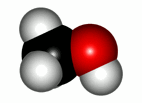 | 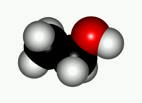 |  |
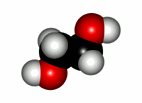 | |
| Methanol | Ethanol | Isopropanol | Ethylenglycol | Glycerin |
| It is called wood alcohol because it can be obtained by wood dry distillation. It is used as solvent for paintings and as a combustible. It is HIGHLY POISONOUS and produces blindness when swallowed or breathed, even in low amounts. A 30 mL dosis is lethal. Metabolicaly, it is transformed into benzaldehyde and formic acid that prevent oxygen transport to blood. | It is obtained by fermentation of carbohydrates (sugars and starch) that is self-inhibited when alcohol content reaches ca. 15%. In order to raise alcohol content of bevarages, it is necessary to perform a distillation but the azeotropic 95:5 alcohol:water mixture cannot be surpassed. Pure alcohol consumption is avoided by the addition of denaturalizing substances. Ethanol is VERY POISONOUS and kills a person when its blood level is above 0.4% . It is metabolyzed in the liver at a rate of 10 mL/h. Nevertheless, it is used as an antidote against methanol or ethylenglycol poisoning. | It mixes with water and most organic solvents in all ratios. It is used as antifreezer, solvent, cleaner, dehydrating agent, extracting agent, synthesis intermediate and antiseptic. It is highly TOXIC by oral ingestion or inhalation. | It was called glycol because Wurtz, who discovered it in 1855, felt a certain sweet flavor. It is used as solvent, antifreezer, hydraulic fluid, reaction intermediate in the synthesis of explosives, plasticizers, resins, fibers and artificial waxes. It is TOXIC by ingestion. | It was discovered by Scheele in 1779. Its name arises from its sweet flavor. It is a very viscous substance, soluble in water and NON-TOXIC. The alkaline hydrolysis of triglicerides (fats) produces glycerine and soaps. The triple nitrate of glycerine is a powerful explosive. |
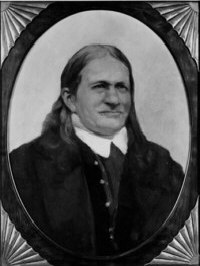
| C6H5OH |
|---|
| Phenol |
Phenol, formerly named carbolic acid, was discovered by Runge in 1834 from tar. It melts at 43ºC, boils at 183ºC and has a not too pleasant, characteristic smell. It is very soluble in water and in the majority of organic solvents. It is caustic and very poisonous. Just 1 g can kill an averege person. Phenol can poison by skin absorption. Its uncontrolled release as industrial waste can make a large damage to aquifers. It kills the aquatic fauna at a concentration as low as 1 ppm. In the presence of chlorine (used in water treatment) phenol can be transformed into chlorophenol of an foul taste. However, phenol can be easily and naturaly removed from the environment by pond rushes or reeds, very common aquatic plants.
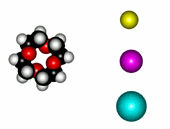
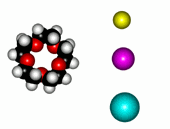
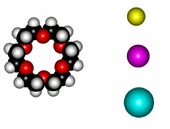

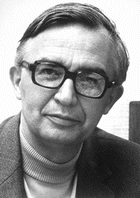
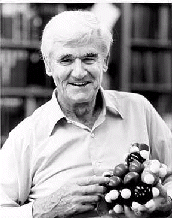
| H2S | CH3SH | CH3SSCH3 |
|---|---|---|
| Hydrogen sulfide | Methylthiol | Dimethydisulfide |